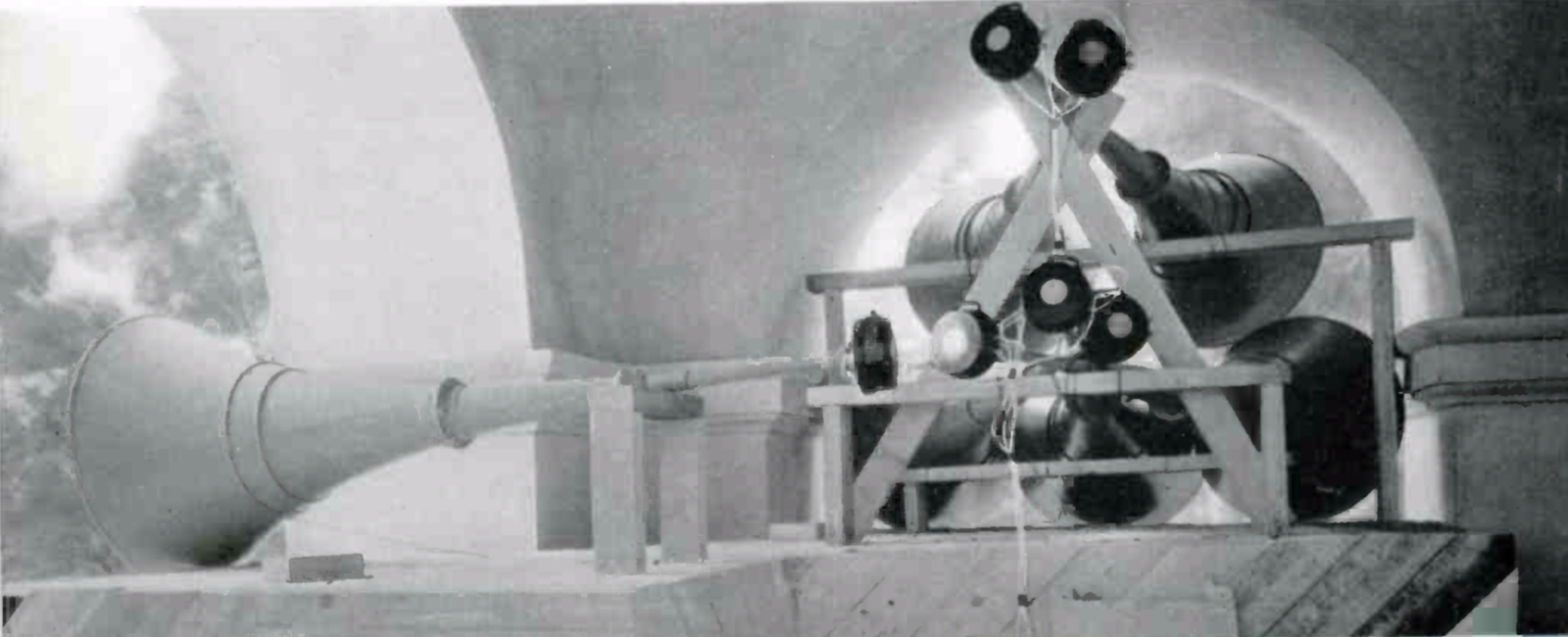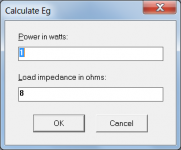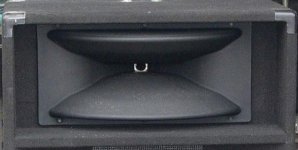I have never experienced Function One system other than the large venue installation, do you prefer it over ATC mid dome for domestic listening?
Quite different animals I would say.
The ATCs are very low efficiency, but very linear studio monitors. The big ones will play loud though, but require beefy amplification.
The Funktion One paper compression cones are primarily used in PA products.
Most of these are not really suited to hi-fi, because of the narrow coverage angles. Moreover, you may want a slightly better top-end extension than these paper cones provide.
For domestic use I would prefer to build or buy a Synergy to almost any of the F1 products, except for their very expensive DJ monitors.
Most of the times I go to clubs or other venues where electronic music is played. Electronic music with the clear exception of EDM and similar funfair noise.
I watched several videos posted by Ian Beaver of Danley Soundlabs and none of those included music I appreciate.
Here in Europe Danley (Pure Groove) appears to be synonymous with tapped horn subwoofers. While very good overall, I would like to hear some of Danley's conventional frontloaded horn subs.

Last edited:
So I have two models of Tl for the 18, one has higher efficiency and proper cross sectional area, the other has lower efficiency and smaller CSA. The latter version has lower impedance, better group delay. I can still reach loudness goals with the smaller TL but I cannot figure out how much juice I am giving each driver. 117 vs 90 EG....I cannot turn this into watts lol!
Yes, that's the one. Funny that I remember the woofers better than the horns. 🙂
I had forgotten that John did the crossover, probably because he was not the person I spoke to in the room. I'm still convinced that it was mostly a level mismatch, tho there might have been some response shaping missing on the horns. It would have been fun to work on getting them tuned better. Perhaps it's a good thing for me they weren't sounding better, for had they been optimized in that room, I might still be in love and pining away that I could never afford them. 😀
FWIW, my buddy Poinz (known here for his Musical Machine amp) showed me photos of a system he visited in Cyprus. All horn, right down to the bass. I think it was Goto and/or ALE drivers. There was a funny shot of the bass horn and driver sticking far, far out of the back of the house.
Agreed on the level mismatch and in-room optimization. Such horn systems are rarely plug 'n play. In an untreated small-medium sized rectangular room (> a cube), the deep horns shoot against the rear-wall causing a cluster (explosion) of reflections.
It's not surpising, because this is what these horns were designed for:

Goto and Ale make very esoteric drivers. Some of these cost each as much as several pairs of Danley Synergies.
I would have expected Beryllium or Aluminum diaphragms, but Goto uses only Titanium.
Impressive driver specs though.
Attachments
Last edited:
For domestic use I would prefer to build or buy a Synergy to almost any of the F1 products, except for their very expensive DJ monitors.
I don't think I will ever have a chance to hear their DJ monitor in US, but they look interesting, indeed. 🙂 Thank you for your comment, anyway, it sounds pretty reasonable to me.
So I have two models of Tl for the 18, one has higher efficiency and proper cross sectional area, the other has lower efficiency and smaller CSA. The latter version has lower impedance, better group delay. I can still reach loudness goals with the smaller TL but I cannot figure out how much juice I am giving each driver. 117 vs 90 EG....I cannot turn this into watts lol!
In Hornresp, can someone break down the EG spec in a way that I can translate this into watts and ohms?
From the acoustic power screen, select "driver power" from the tools tab drop down
Thats another issue, I can only add filling within the loudspeaker wizard, so when I "calculate" the sim has no filling. Only after calculate can you access options like "drive power"
Eg is "Amplifier open circuit root mean square voltage" how do we turn that into watts and ohms?
Nevermind I figured out how to get it to run in wattage using the pmax. Which doesnt help since pmax doesn't work for me when I am working with a bass reflex. lol
Last edited:
re' no filling after calc for Tline. I saw that when I first ran your model and it struck me as strange and then I forgot about it. In sims of e.g. sealed box, the filling is kept. This might be a bug of interest to @David McBean. If the filling effect can't be included in the calculated acoustical power, perhaps he could add a driver power chart to the transmission line wizard.
Using PMax just shows you where the sim exceeds the PMax level that you entered, it does not tell you the actual power consumption. I would hand calculate at key points from the impedance chart using P=E*E/Z
Using PMax just shows you where the sim exceeds the PMax level that you entered, it does not tell you the actual power consumption. I would hand calculate at key points from the impedance chart using P=E*E/Z
Yes, that I can imagine.
Do you have some measurement data of these?
I wonder if the hornloading + rear chamber smooths out cone breakup and/or pushes the modes upwards.
It would also be interesting to see the polars.
I assume there's no phase plug in front of the cone?
You've basically created something similar to the BD-Design Oris horns.
I remember suggesting the PRVs to replace the (PITA) Lowthers that a friend used with his diy wooden Oris horns.
No phase plug.. i'll update this and the PRV thread with more details over the weekend
I got a pair of EV SH-1502ER. Not too fancy, but fulfills the thread title if subwoofers are to be used.
So now I know that large radial horns work for me. I considered the Yuichi A290, since it is well documented. Are there any other designs around without using the fins? I would like to do without them if that is not a compromise. The EV horn has no fins. How about Joseph Crowe's designs? Anyone heard them? All I need is either a set of drawings or a 3D model to cut in slices.
I wonder if there is any practical limit with the size of these horns. Intended use optimally from 500 Hz up. And maybe even 3D printing is an option, at least for the prototype🙂
So now I know that large radial horns work for me. I considered the Yuichi A290, since it is well documented. Are there any other designs around without using the fins? I would like to do without them if that is not a compromise. The EV horn has no fins. How about Joseph Crowe's designs? Anyone heard them? All I need is either a set of drawings or a 3D model to cut in slices.
I wonder if there is any practical limit with the size of these horns. Intended use optimally from 500 Hz up. And maybe even 3D printing is an option, at least for the prototype🙂
In Hornresp, can someone break down the EG spec in a way that I can translate this into watts and ohms?
Double-click on the Eg input box in Edit mode.
2.83 volts = 1 watt into 8 ohms.
Attachments
It certainly doesn't have to be. It sounds as though you like the EV. If I'm not mistaken, (hor) has a characteristic like a higher T Hyp/Ex which handles lower frequency directivity comparatively well.I would like to do without them if that is not a compromise.
Attachments
In sims of e.g. sealed box, the filling is kept.
Just to clarify - it is actually acoustical "lining" that is specified in the case of a sealed box, not acoustical "filling". The Hornresp acoustical lining and acoustical filling simulation models are quite different. The lining model applies in both the main calculations and the loudspeaker wizard, but the filling model only applies in the loudspeaker wizard. This is intentional - it is not a bug.
There are no plans to include a driver power chart in the loudspeaker wizard.
I don't think I will ever have a chance to hear their DJ monitor in US, but they look interesting, indeed. 🙂 Thank you for your comment, anyway, it sounds pretty reasonable to me.
In recent years the PSM-318 was demoed at the NAMM, as far as I know.
This is an interesting cross-pollination between Tannoy and Funktion One. It's supposed to be a Tannoy Pro Audio Coax driver (but looks like a F1 coax, due to the Fane comp. driver) mounted in the F1's AxeHead.
It was sold as Tannoy IQ-series.
An externally hosted image should be here but it was not working when we last tested it.
It is indeed an FK1 design as I was speaking to Tony about this design some years ago.
In recent years the PSM-318 was demoed at the NAMM, as far as I know.
This is an interesting cross-pollination between Tannoy and Funktion One. It's supposed to be a Tannoy Pro Audio Coax driver (but looks like a F1 coax, due to the Fane comp. driver) mounted in the F1's AxeHead.
It was sold as Tannoy IQ-series.
An externally hosted image should be here but it was not working when we last tested it.
Indeed, he designed these for Tannoy and seemingly also supplied the drivers:
An externally hosted image should be here but it was not working when we last tested it.
AllenB, yes, I like the horn. The profile looks like it has some smoothly connected flat/conical parts. I think I could easily make this profile or similar in Fusion360. Can you recommend some equation for the expansion curve?
Attachments
This is close to what the goal of this thread is.. I scored a pair of old azurahorn-160s, made a conical insert to adapt a pair of 5 inch PRV 5MR450-NDY to the 8 inch opening, and underneath them is a 220L ported corner enclosure for a faital 15PR400 - crossed over at around 300-350hz (slowly working on the crossover)
It's an awesome sounding setup, basically constant directivity and I believe the crossover is low enough that the bass driver is partially corner loaded by its position in the room. Certainly capable of high (home) SPL from about 30-15000hz
Nice speakers and truely in the sense of this thread! what is the distance between Woofer and Horn driver? I would not go more than 1/4 of the wavelength at x-over.
AllenB, yes, I like the horn. The profile looks like it has some smoothly connected flat/conical parts. I think I could easily make this profile or similar in Fusion360. Can you recommend some equation for the expansion curve?
This is the paper in which the horns are described. You probably know/have it already.
Attachments
Last edited:
- Home
- Loudspeakers
- Multi-Way
- Is it possible to cover the whole spectrum, high SPL, low distortion with a 2-way?




